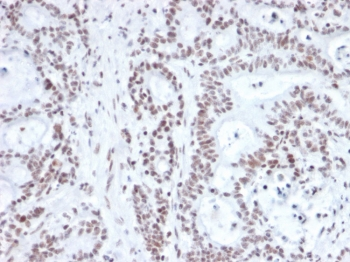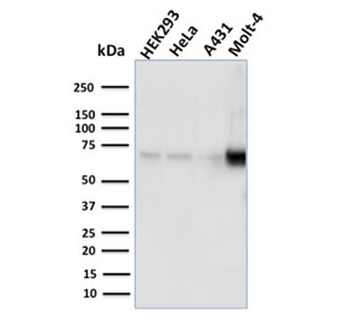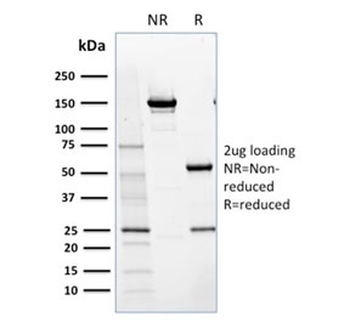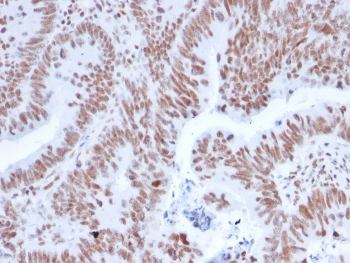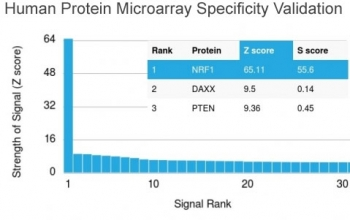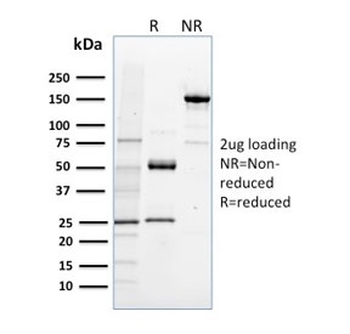You have no items in your shopping cart.
NRF1 Antibody / Nuclear Respiratory Factor 1
Catalog Number: orb2643609
| Catalog Number | orb2643609 |
|---|---|
| Category | Antibodies |
| Description | The NF-E2 DNA binding protein is composed of two subunits, p45 and MafK, and it regulates expression of globin genes in developing erythroid cells through interaction with Maf recognition elements (MAREs). A family of NF-E2 related proteins, which are collectively known as the Cap 'n' collar (CNC) family and include Nrf1 (also designated TCF11), Nrf2 and Nrf3, are bZIP transcription factors that heterodimerize with Maf proteins to bind MARE sequences. The Nrf proteins also bind the antioxidant response element (ARE) and are implicated in the regulation of detoxification enzymes and the oxidative stress response. They do so by heterodimerizing with Jun family members (c-Jun, JunB and JunD) to activate gene expression, specifically the detoxifying enzyme, NQO1. Nrf2 is widely expressed and is thought to translocate to the nucleus after treatment with xenobiotics and antioxidants, which stimulate its release from a repressor protein Keap1. Nrf3 is highly expressed in placenta, B cells and monocytes. |
| Species/Host | Mouse |
| Clonality | Monoclonal |
| Clone Number | NRF1/2608 |
| Tested applications | IHC-P |
| Reactivity | Human |
| Isotype | Mouse IgG1, kappa |
| Immunogen | A recombinant full-length human protein was used as the immunogen for this NRF1 antibody. |
| Antibody Type | Primary Antibody |
| Dilution range | Immunohistochemistry (FFPE): 1-2ug/ml |
| Purity | Protein G affinity chromatography |
| Conjugation | Unconjugated |
| Formula | 0.2 mg/ml with 0.1 mg/ml BSA (US sourced), 0.05% sodium azide |
| Hazard Information | This NRF1 antibody is available for research use only. |
| UniProt ID | Q16656 |
| Storage | Maintain refrigerated at 2-8°C for up to 2 weeks. For long term storage store at -20°C in small aliquots to prevent freeze-thaw cycles. |
| Buffer/Preservatives | 0.2 mg/ml with 0.1 mg/ml rAlbumin (US sourced), 0.05% sodium azide |
| Note | For research use only |
| Application notes | Optimal dilution of the antibody should be determined by the researcher. |
| Expiration Date | 12 months from date of receipt. |

IHC staining of FFPE human colon carcinoma with NRF1 antibody. HIER: boil tissue sections in pH9 10mM Tris with 1mM EDTA for 20 min and allow to cool before testing.
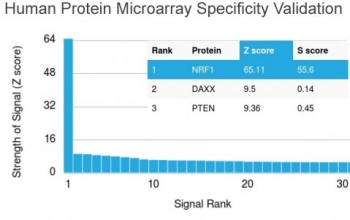
Analysis of HuProt (TM) microarray containing more than 19000 full-length human proteins using NRF1 antibody (clone NRF1/2608). These results demonstrate the foremost specificity of the NRF1/2608 mAb. Z- and S- score: The Z-score represents the strength of a signal that an antibody (in combination with a fluorescently-tagged anti-IgG secondary Ab) produces when binding to a particular protein on the HuProt (TM) array. Z-scores are described in units of standard deviations (SD's) above the mean value of all signals generated on that array. If the targets on the HuProt (TM) are arranged in descending order of the Z-score, the S-score is the difference (also in units of SD's) between the Z-scores. The S-score therefore represents the relative target specificity of an Ab to its intended target.
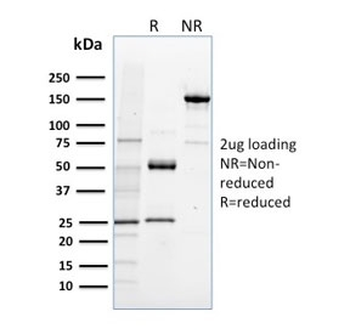
SDS-PAGE analysis of purified, BSA-free NRF1 antibody as confirmation of integrity and purity.
NRF1 Antibody / Nuclear Respiratory Factor 1 [orb639836]
IHC-P, WB
Human
Mouse
Monoclonal
Unconjugated
20 μgNRF1 Antibody / Nuclear Respiratory Factor 1 [orb2643611]
IHC-P, WB
Human
Mouse
Monoclonal
Unconjugated
100 μgNRF1 Antibody / Nuclear Respiratory Factor 1 [orb639835]
IHC-P
Human
Mouse
Monoclonal
Unconjugated
20 μg







